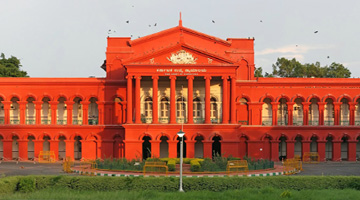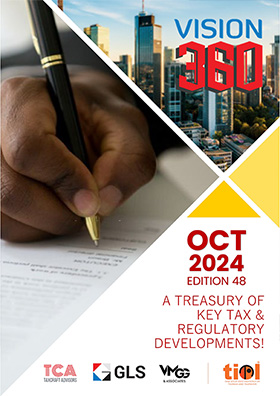CX - Two notifications prescribing same rate of duty, one with condition of non-availment of CENVAT and another without any condition - assessee is not required to explain anomaly but it is for Central Government to take responsibility: HC
By TIOL News Service
BENGALURU, AUG 10, 2018: THE assessee is a manufacturer of glazed tiles (ch.69).
In respect of the impugned goods, Notification No. 02/2008-C.E . dated 1.3.2008 prescribed concessional rate of duty of 14% [Entry/Sr.no.48 refers]. No conditions were attached for availment of this rate of duty. Later, the notification was amended by notfn. 58/2008-CE to reduce the concessional rate to 10% and by another notification 4/2009-CE dated 24.02.2009 to 8%. Notably, the rate was again raised to 10% by notification 6/2010-CE dated 27.02.2010.
Incidentally, another notification 5/2006-CE was also in vogue during the material period. This notification prescribed a concessional rate of 8% to the impugned goods subject to the condition of non-availment of CENVAT credit. [Entry/Sr.no. 13, Condition no. 7 refers.] This entry was omitted by notification 11/2010-CE dated 27.02.2010.
The present case involves the period 07.07.2009 to 26.02.2010 when apparently the rate of duty was the same (of 8%) under both the notifications excepting of course, the condition of non-availment of CENVAT credit under one and no such condition in the other.
In the matter of the proceedings initiated against the assessee, the adjudicating authority,while confirming the demand of CENVAT credit, had given the following finding -
14. The assessees were operating under self assessment scheme during the relevant period and were at liberty to avail benefit of concessional rate under any eligible notification and pay applicable duties on the clearance of the goods. In the instant case, the assessee have availed the benefit of Notification No.5/2006 dated 1.3.2006 (as amended by Notification No.15/2009 CE dated 7.7.2009) for the clearances affected during the period from 7.7.2009 to 26.2.2010 and the same is evident from the declarations made by them in the ER-1 returns filed for the relevant period. The same is also evident from the invoices issued by them for clearance of the goods during the impugned period, wherein they have indicated Notification No.15/2009 CE dated 07.07.2009 against the Notifications claimed. Accordingly, for the period upto 26.02.2010, as per the condition under the said Notification, they were not eligible to avail Cenvat Credit of duty paid on the inputs used in or in relation to the manufacture of the goods. If the assessee had any intention to shift to any other notification, in this case Notification No.2/2008 CE dated 1.3.2008, they should have done the same prospectively, for the subsequent clearances and there is no provision under any notification to extend the benefit of the notification which was not claimed by the assessee at the time of clearance of the goods, for the previous period. In the light of the above, the assessees were not entitled for the said credit of Rs.1,11,02,931/- which relates to the period prior to 26.02.2010 and availment of the same by them in March, 2010 is in contravention of the underlying condition under Notification No.5/2006 dated 1.3.2006. Hence, entire credit of Rs.1,11,02,931/- is liable to be recovered from them along with interest.
Against this order, the assessee went in appeal before the CESTAT and contended that the Revenue could not compel them to avail a particular notification.
The CESTAT noted that in the appellant's own case their appeal was allowed (on 09.04.2014 by CESTAT, Ahmedabad) by following the Tribunal order in an identical case of Savana Ceramics - 2014-TIOL-1499-CESTAT-AHM.
Accordingly, following the earlier order, the appeal was allowed with consequential relief.
Kindly see - 2016-TIOL-1885-CESTAT-BANG.
Revenue is aggrieved by this order and has filed an appeal before the Karnataka High Court.
Incidentally, an appeal against the order passed by the Tribunal in the case of the assessee on 09.04.2014 has been appealed against before the Gujarat High Court where the same is still pending.
After considering the elaborate submissions made by both sides, the High Court observed thus -
++ It is not disputed before us that the Notification No.02/2008 dated 01.03.2008 was also applicable to the assessee in the present case for the period 07.07.2009 to 26.02.2010 in question. The Show Cause Notice of the assessing authority dated 16.03.2011 and the order (Original) Annexure-‘A' dated 24.07.2013 clearly admits this position vide aforesaid quoted paragraph Nos.13 and 14 from the Order-in-Original.
++ The assessee has not claimed CENVAT credit during the aforesaid relevant period in violation of condition No.7. It has started to claim the said CENVAT credit only after 01.03.2010, after the anomalous position between the two Notifications No.05/2006 with the condition against availment of CENVAT credit and Notification No.02/2008 without any such condition, was removed by the Central Government on 27.02.2010. Therefore, no malafide can be attributed to the respondent-assessee in claiming such CENVAT credit after removal of the anomaly by the Central Government itself.
++ Why the two Notifications governing the same commodity and exigibility of excise duty on the same commodity one with the condition and another without condition of CENVAT credit is not for the assessee to explain. On the contrary, it is for the Central Government to take the responsibility of prescribing the same rate of excise duty under two different Notifications, but one with the condition against the availment of CENVAT credit and another without any such condition.
++ The claim of CENVAT credit in the eye of law by the assessee in the present case appears to be perfectly in consonance with the Notification No.02/2008 dated 01.03.2008. Merely because the assessee in the said period filed its returns in form No.ER-1 indicating the payment of said 8% excise duty under Notification No.15/2009-C.E. dated 07.07.2009, which amended the original Notification No.05/2006- C.E. dated 01.03.2006 and did not mention anything about Notification No.02/2008 dated 01.03.2008, though the said later Notification also equally applies for the said period, the respondent-assessee cannot be bound down to abide by the condition No.7 of the said Notification No.05/2006-C.E. dated 01.03.2006.
Placing reliance on the apex court decision in Share Medical Care - 2007-TIOL-26-SC-CUS, wherein it is held that if two exemption notifications are applicable in a given case, the assessee may claim benefit of the more beneficial notification, the High Court concluded that no substantial question of law arises in the present appeal.
The Revenue appeal was dismissed.
(See 2018-TIOL-1567-HC-KAR-CX)















